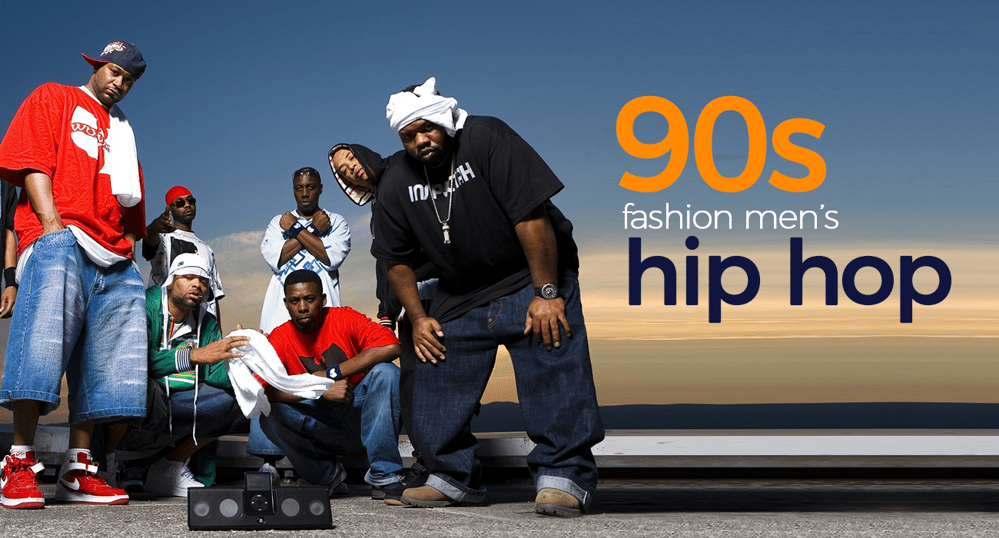
90s fashion men’s hip hop
For many years, 90s nostalgia has been driving the fashion scene, and ‘90s hip-hop fashion has been at the forefront of the revival. This shouldn't come as a surprise; Supreme, the New York skate brand whose formula is largely based on the tradition of ‘90s street fashion, has dominated current trends across the board.
Aside from that specific link, the 1990s are known for their plethora of fashion trends. The legacy of the 1990s is seen through a rose-tinted prism of CD covers, magazine spreads, cable TV shows, and blockbuster films as the last time before the digital age dominated culture.
Hollywood blockbusters like Poetic Justice, Boys n the Hood, and Juice put black American style on the big screen and created some of the most memorable scenes in cinematic history, while black music groups like Bones Thugs-n-Harmony and Boys II Men took the aesthetic of ‘90s hip-hop and created a style that influenced virtually every major boy band of the decade (as well as some solid acting performances from Janet Jackson, Ice Cube and Tupac Shakur).
Even for those who grew up in the '90s, hearing the words '90s hip-hop fashion' probably conjures up a laundry list of references and important parts, but putting them into words can be difficult. Younger generations purchasing contemporary pieces from brands such as OFF-WHITE, Palace, and Guess can find it difficult to understand the references without first-hand experience.
So, here's a rundown of the important 1990s hip-hop fashion wardrobe, and how each item came to represent the era's style in its unique way.
Caps Kangol
Kangol, a British headwear company popularized by LL Cool J in the 1980s and featured in some of the era's most seminal films, became ingrained in the cultural memory of ‘90s hip-hop. Wesley Snipes starred as Nino Brown, a drug lord who takes over a New York apartment building and turns it into a 24-hour crack house in New Jack City in 1991. Brown and many of his members can be seen wearing Kangol caps with the brand's logo proudly displayed in the film.
Timberland Boots are a well-known brand
The humble suede Timberland boot with its iconic tan colorway is still a staple of Newyork style, but its roots can be traced back to hip-hop in the 1990s. Though the shoes were designed for construction workers and the like, word on the street is that they caught on with New York's drug dealers, who wanted tough, durable footwear to keep their feet warm and dry during long hours on the streets.
Timberland boots were worn by Biggie, Tupac, Nas, Aaliyah, and nearly every other hip-hop and R&B artist you can think of, and they still are today.
T-shirts in white that are oversized
Hip-hop fashion was primarily characterized by exaggerated fits and long silhouettes from the early 1990s to the late 2000s.
One explanation given is that many disadvantaged children in cities such as New York, Los Angeles, and Chicago will receive clothing as hand-me-downs from their older siblings.
A pair of dungarees
Denim dungarees' popularity, while welcome, is possibly the most difficult to place of all the strange and wonderful styles that the 1990s created. Fitted or baggy, strapped up or undone, and styled with T-shirts, hoodies, button-ups, or nothing at all, the surprising trend received cultural approval from TLC, The Fugees, Will Smith, and Tupac, and went on to become a staple of the age.
Consider this: Supreme debuted a pair of dungarees many seasons ago, and has continued to release at least one pair every season since. The power is formidable.


